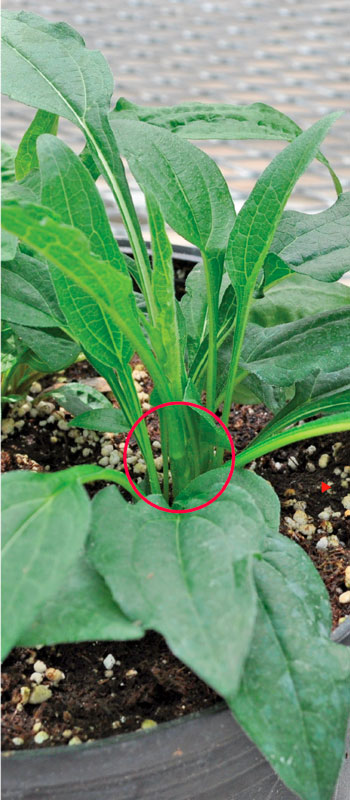10/1/2021
Forcing Seed Echinacea for Spring and Fall Color
Bin Liu & Cor de Jong

The market demand for colorful echinacea continues to be high, as it’s a perennial class that checks many boxes for today’s gardener—they’re native to North America; they’re pollinator and bird friendly; they offer perennial enjoyment for most of the U.S. and long-lasting color in Canada; and the flower form of echinacea lends itself to landscape and mixed container usage.
For such a versatile plant that’s in demand, providing more options to sell it in full flower should be pursued. And it can! Today, the seed varieties of echinacea from Kieft Seed offer these shoulder-season flowering opportunities, as our culture research team has developed daylength treatment strategies and guidelines to help you bring echinacea to market for early spring, Mother’s Day and even fall sales dates.
The research below (published by Kieft Seed in 2021) contains culture and GrowerFacts details for Cheyenne Spirit, the F1 hybrid Artisan collection and the PowWow Echinacea series.
Spring forcing
Our objective during our spring-forcing research was to determine how to use long days to produce award-winning echinacea for early spring flowering and Mother’s Day sales, targeting Week 18.
In Week 44, we sowed one seed per cell in a 288 tray for Cheyenne Spirit, Artisan Red Ombre and PowWow Wild Berry Echinacea. When the plants displayed two true leaves, we transplanted to a gallon container and grew them under natural short days until the plants had minimum seven true leaves.
Here’s the key: When the plant expressed seven true leaves, we started long day lighting (14 hour or night interruptive). We continued this lighting schedule for approximately five weeks (from Week 6 to 11) under average daily temperatures (ADT) around 68F (20C) until a visible knot appeared in the stem (see Figure 1).
Figure 1. For spring forcing, when a visible knot appears, finish the plants under natural daylength with an ADT of 68F (20C) until flowering.
Once the visible knot appeared on the stem, we turned off long-day lighting and finished the plants under natural daylength until flowering, which took place around Week 18. Total spring crop time was about 25 to 26 weeks under ADT about 68F (20C).
Key points for spring success:
• Double check you have natural short days in your planned growing area when you transplant the 288 with the two true leaves until you reach the seven true leaves.
• Supplemental long-day lighting starts from a minimum seven true leaf stage to visible knot stage.
• Daylength for long-day treatment can be daylength extension to 14 hours or night interruption from 10:00 p.m. to 2:00 a.m.
• Long-day treatment should be applied to quart or large containers. Smaller sizes, such as 72 or 50 cell trays, could delay flowering and cause less flower uniformity.
Fall forcing
Our research objective for fall forcing of the Kieft Seed Echinacea assortment was to determine how to use short days to produce the most uniform and full-flowering plants for sale during the crucial decorating season.
For fall sales, targeting Week 35, we sowed one seed per cell in 72 or larger plug trays in Week 14. When plants displayed two true leaves, we started 10-hour short-day (black cloth) treatment (around Week 19). We stopped the 10-hour short-day treatment when plants reached a seven full-unfolded-true-leaf stage (approximately six weeks under ADT 72F [22C]).
In Week 25, we transplanted the plugs to their final container and continued their growth under natural long-day conditions. Flowering then occurred around Week 34 to 35. Total fall crop time was about 20 to 21 weeks under ADT 72 to 75F (22 to 25C).
Key points for fall success:
• Implement a six-week short-day treatment from two to seven full-unfolded-true-leaf stage or purchase a short-day grown plug from your plug supplier.
• Daylength for the short-day treatment can be from 10 to 12 hours.
• Short-day treatment can be applied to 72 or 50 plug trays, packs or even finished containers.
With these proven culture guides, you can provide your customers full-flowering and uniform echinacea plants for important selling seasons and continue to meet the demand of North American gardeners. GT
Additional Echinacea GrowerFacts documents, videos and the full data for this forcing research can be found at www.panamseed.com. Download the Kieft Seed Perennials Forcing Chart there, too, on the Culture webpage.
Bin Liu is the Senior Culture Research Manager for PanAmerican Seed and conducts her research from Elburn, Illinois. Cor de Jong is the Global Product Manager for Perennials and his office and research is in the company’s facility in the Netherlands.